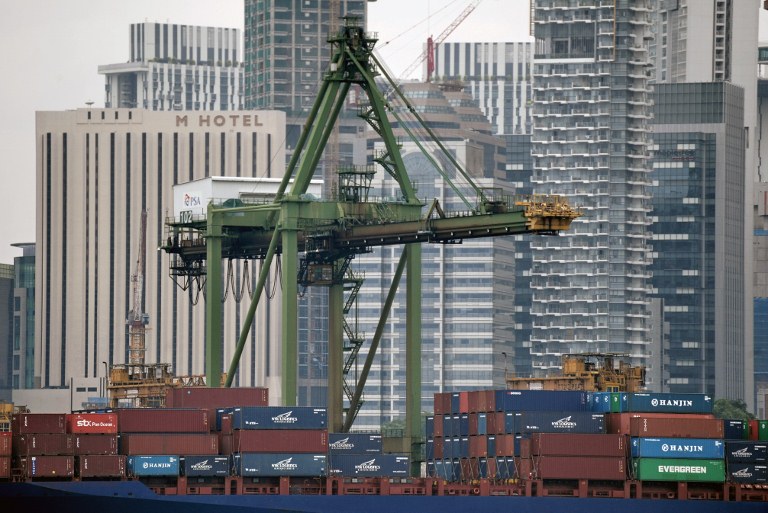
A vessel loaded with cargo containers anchors along the wharf at Keppel port in Singapore on July 13, 2012. AFP
LIMA, Peru — Pacific Rim leaders are meeting in Peru at the weekend to push for continued free trade against the backdrop of rising protectionism globally.
Here is a guide to the main regional free trade pacts being discussed.
Trans-Pacific Partnership (TPP)
Led by the United States, the TPP involves 12 countries including Japan, Malaysia, Vietnam, Singapore, Brunei, Australia, New Zealand, Canada, Mexico, Chile and Peru.
It has been described by the US as a “gold standard” for all free trade agreements because it goes beyond just cutting tariffs. It includes removing a slew of non-tariff measures and requires members to comply with a high level of regulatory standards in areas like labor law, environmental protection, intellectual property and government procurement.
The TPP notably excludes China, the main Asian power and the world’s second biggest economy.
Analysts say the TPP is the economic plank of outgoing US President Barack Obama’s strategic rebalance to Asia.
However, it faces uncertainty under US President-elect Donald Trump, who has said he will not support the agreement because he deems it disadvantageous to his country.
Regional Comprehensive Economic Partnership (RCEP)
Backed by China, the RCEP involves the 10 members of the Association of Southeast Asian Nations (ASEAN) — Brunei, Cambodia, Indonesia, Laos, Malaysia, Myanmar, the Philippines, Singapore, Thailand and Vietnam — plus their regional trading partners China, Japan, South Korea, Australia, New Zealand and India.
It notably excludes the United States.
Compared with TPP, the RCEP also aims to cut tariff and non-tariff barriers but calls for lower and more limited regulatory standards.
It also exempts certain goods from the tariff cuts to protect local sectors and allows less developed members more time to comply.
Governments missed a deadline to conclude negotiations last year. But the RCEP has recently been under the spotlight as the fate of the TPP hangs in the balance.
Free Trade Area of the Asia Pacific (FTAAP)
The FTAAP is a long-term goal to link Pacific Rim economies from China to Chile, including the United States.
It aims to harmonize the “noodle bowl” of regional and bilateral free trade agreements that had proliferated following the collapse of the Doha Round of the World Trade Organization talks in 2006.
Asia-Pacific policymakers say there are several pathways to realizing the FTAAP, including both the TPP and RCEP.
Analysts say that with the uncertainty over TPP, the RCEP has emerged as the main pathway toward the realization of a trans-Pacific free trade agreement. CBB

